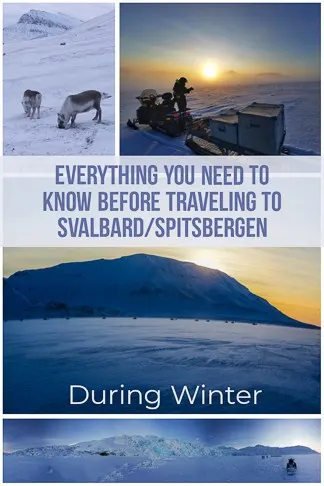On the top of the world, on the northernmost permanently inhabited island on Earth, is where Svalbard/Spitsbergen is located.
It is directly north of Norway, at 74° to 81° North latitude, and is an absolute Arctic paradise.
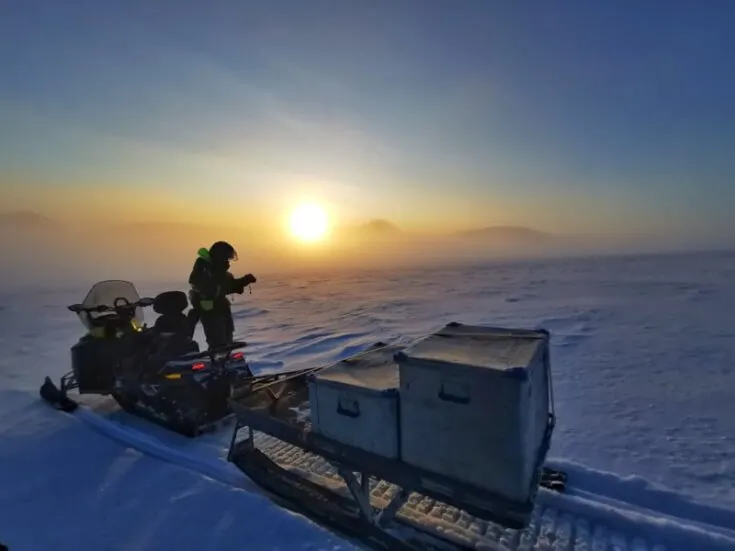
About 60% of the island is covered by glaciers, and about 30% is barren rock. Only 10% is covered by vegetation.
Luckily, most Svalbard is protected, with 70% classified as nature reserves and national parks.
If you want to enjoy the most out of your time in one of the most isolated places on Earth, you’ll need to know a bit more.
Keep reading my guide for visiting Svalbard in winter to find out how to get there and other important tourist information.
Tip: If you’re traveling through Norway and are looking for a fun activity, check out the Preikestolen Hike or Kjeragbolten.
Getting to Svalbard
With Svalbard’s remote location, it is obvious that it can be challenging to reach. The only way to get here is with a scheduled flight or a cruise ship.
Note: There are no passenger boats to Svalbard from mainland Norway.
Travel to Svalbard by Plane
The only airport available is the Svalbard Airport, Longyear (LYR). It only has scheduled flights from Oslo and Tromsø in Norway and occasional charter flights from Murmansk and Moscow in Russia, but this is only for locals and not open to bookings for foreigners.
Svalbard Airport is the northernmost airport in the world with scheduled flights. It´s a new modern airport but to expect too much.
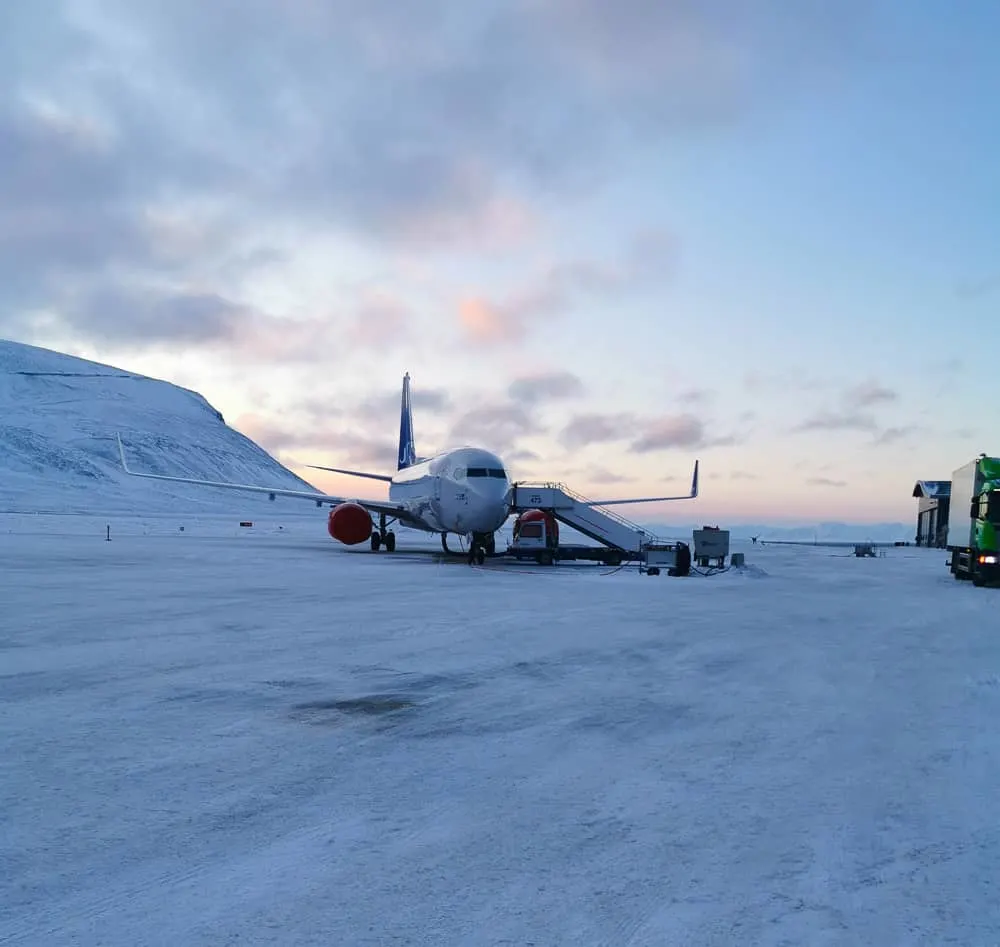
The only reliable way to Svalbard is through Norway, which has two daily flights from Oslo – one with SAS and one with Norwegian Air Shuttle. The flight with SAS often has a stopover in Tromsø.
Be aware that even if Svalbard is part of Norway, it has its own visa rules.
The flights from Oslo/Tromsø to Svalbard are considered to be international flights, and you will have to go through immigration when leaving Oslo/Tromsø.
NB: There’s no flight bridge at the airport here, so you will have to walk from the flight to the arrival hall upon landing – which can be very cold.
So, be sure to bring your warm jacket and hat as hand luggage so that you can put them on before leaving the plane.
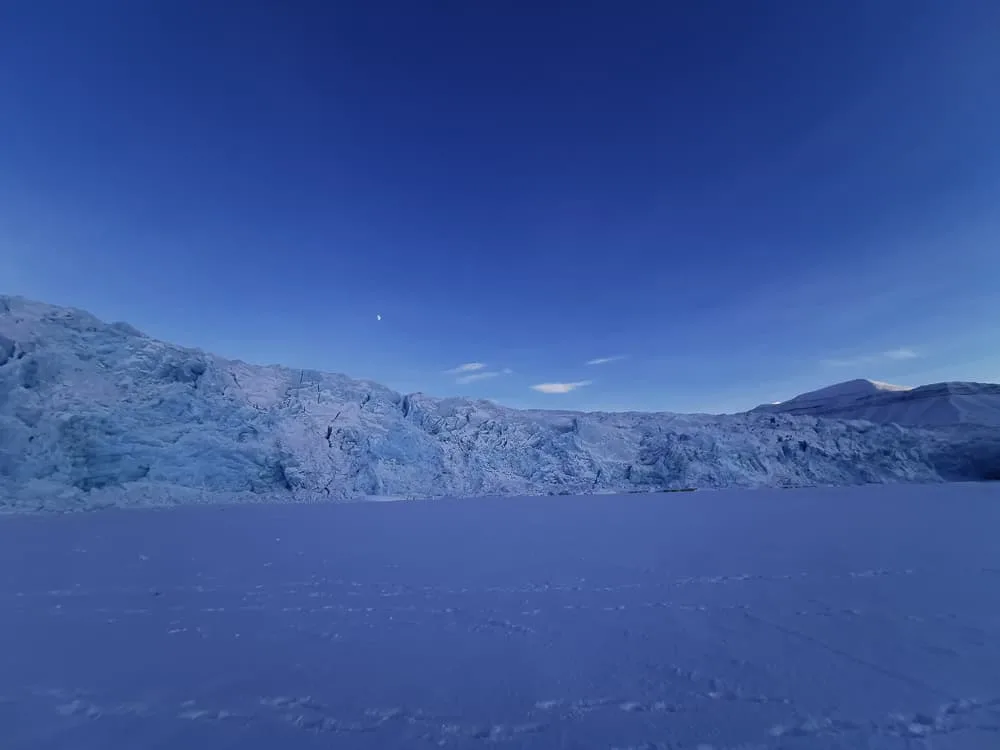
Travel from Svalbard Airport
Once you’ve arrived at the airport, you will now need to make it to your first stop.
Even though the airport is located only about 5 km (3.1 miles) west of Longyearbyen, due to the danger of wild Polar bears, you are not allowed to walk into town from the airport.
Airport Bus From Svalbard Airport
The airport bus picks up and drops off from every hotel around Longyearbyen.
There is one bus for every flight, which takes around 15 minutes. The price is $8.50 (NOK 75)
Taxi from Svalbard Airport
There are taxis available at the airport during opening hours. It will cost you around $16 – $33 (NOK 150 – 300) for the 5 min trip into Longyearbyen.
Svalbard Visa Rules
Svalbard has its own visa rules separate from mainland Norway. This small island in the Arctic ocean has the most liberal visa policy in the world.
No matter what your Nationality is, you are free to live and work in Svalbard.
But you have to work or visit as a tourist. If you don’t work, you will get kicked off the island after a while.
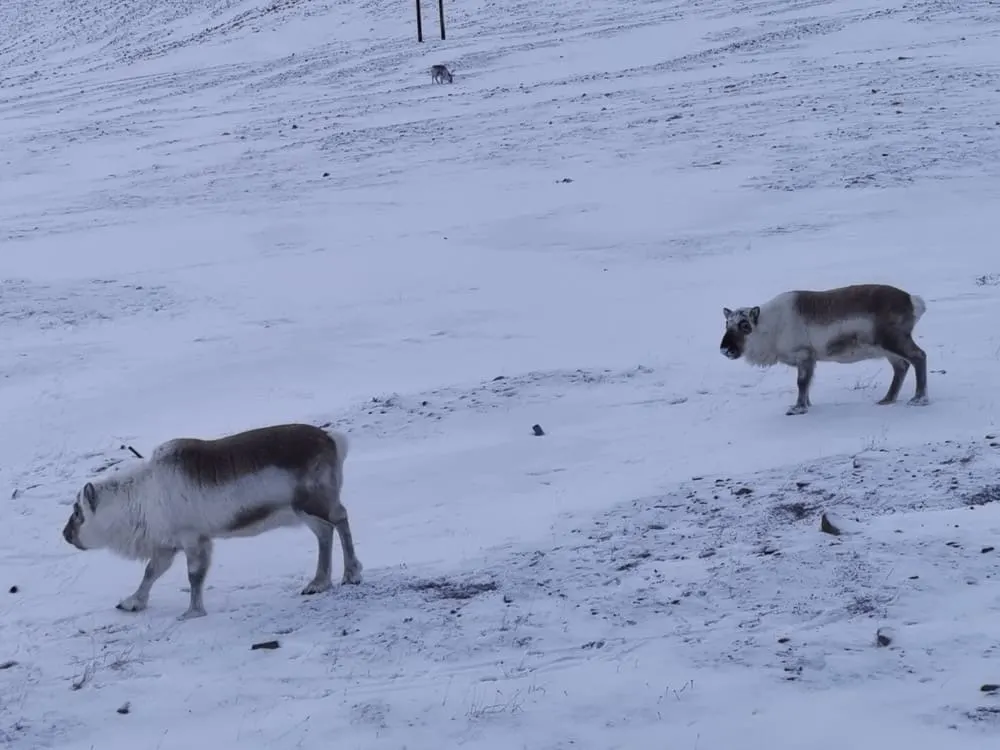
The Svalbard Treaty grants treaty nationals equal rights of abode as Norwegian nationals. Non-treaty nationals may live and work indefinitely visa-free as well. Svalbard also has its own tax laws.
But be aware if you are from a country outside Schengen, you might need a visa for Norway since you have to pass through the country on your way to this remote part of the world.
In fact, you will need a double-entry visa for Norway/Schengen since you will have to go through immigration when entering Norway again upon your return.
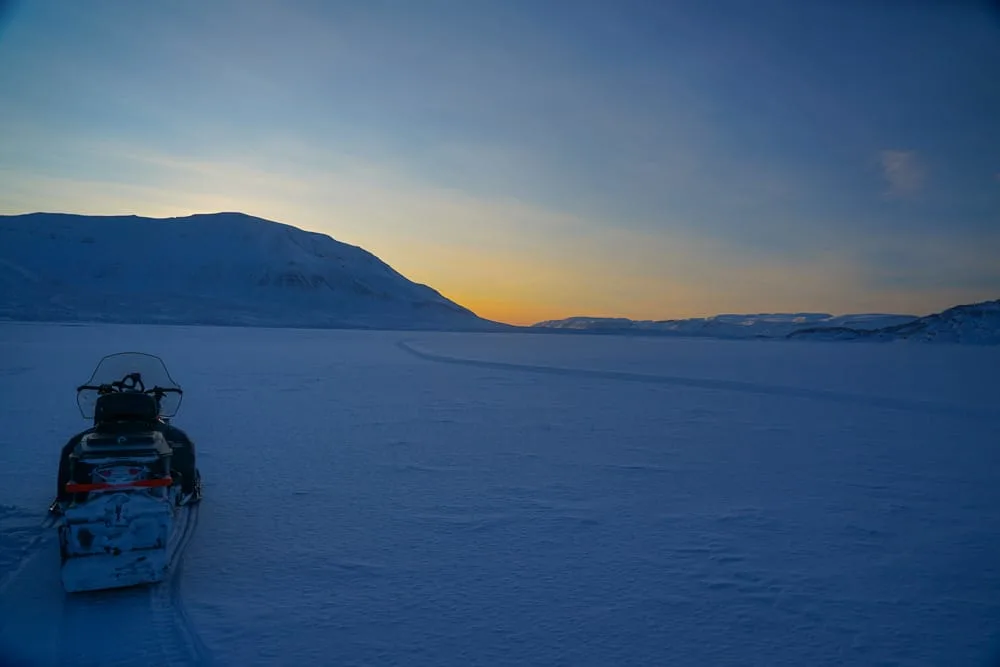
Settlements on Svalbard
While Svalbard might not be the most populated place you’ve visited, it’s still important to become acquainted with all the different settlements that you can visit.
Longyearbyen the main town
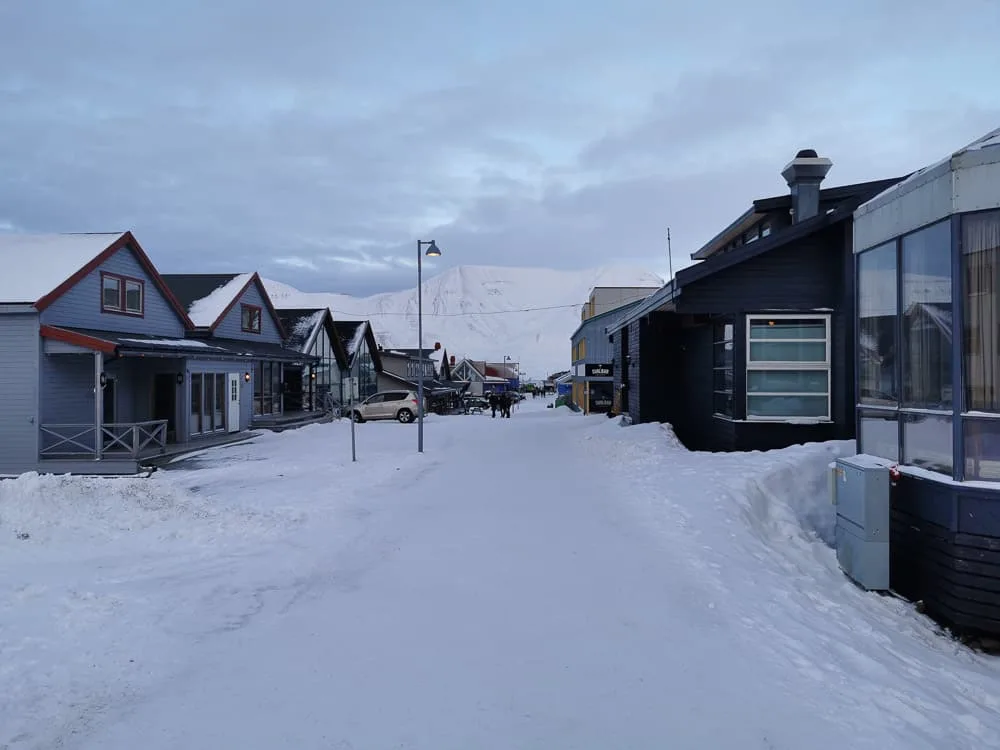
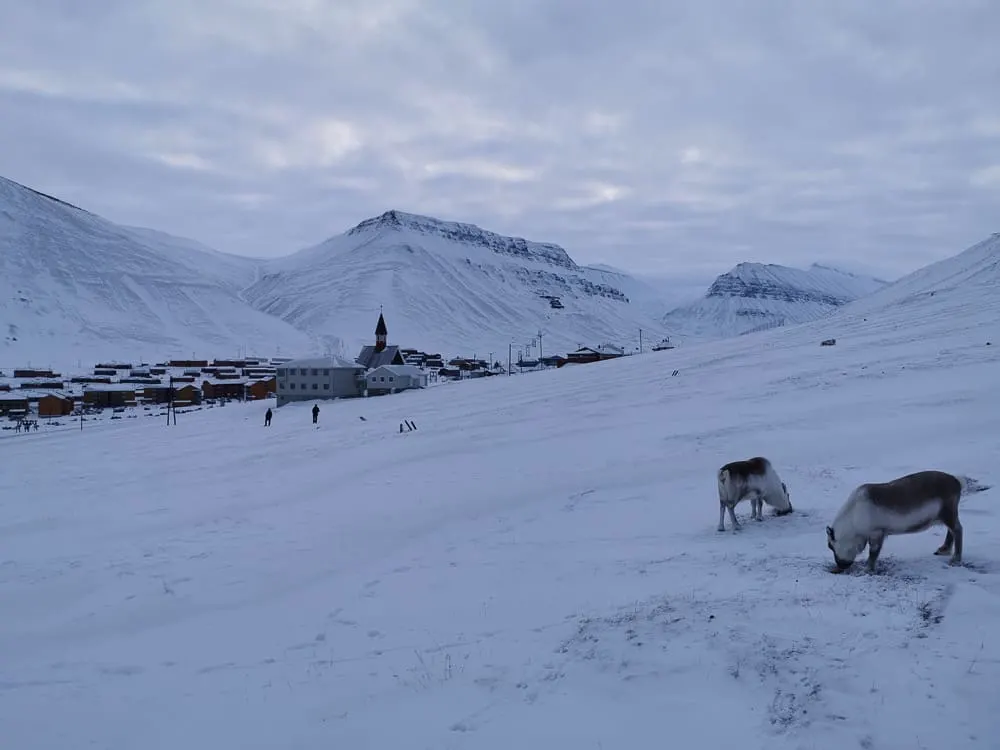
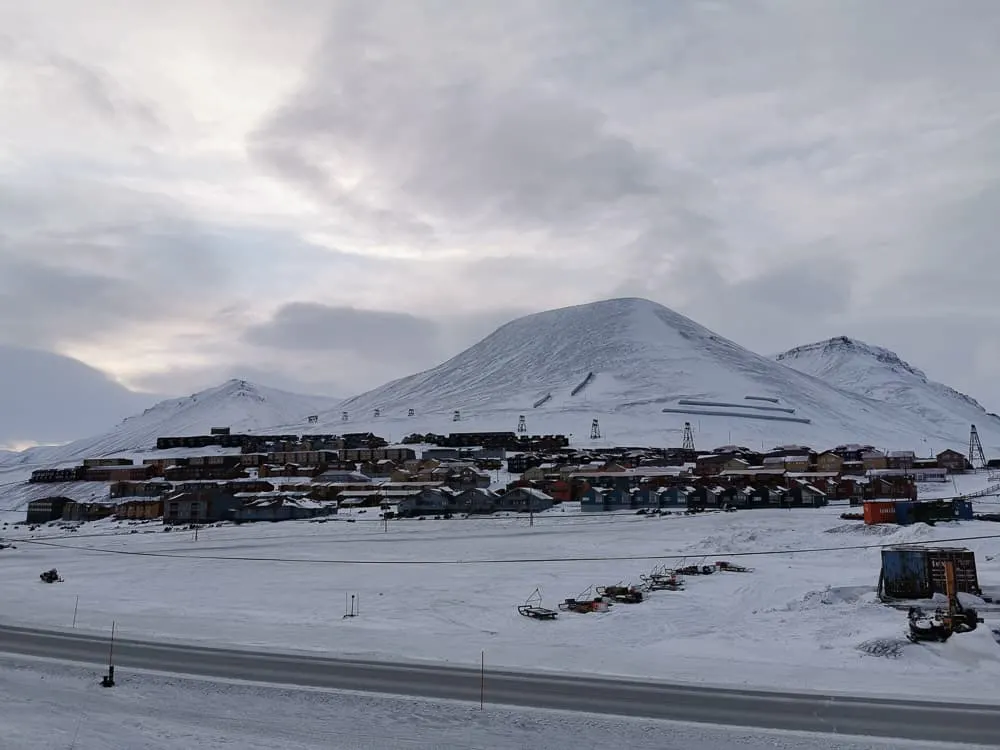
By far the largest settlement, Longyearbyen has a population of around 2,400. This is where most of the shops and services are located, and it is your starting and endpoint on any trips to Svalbard.
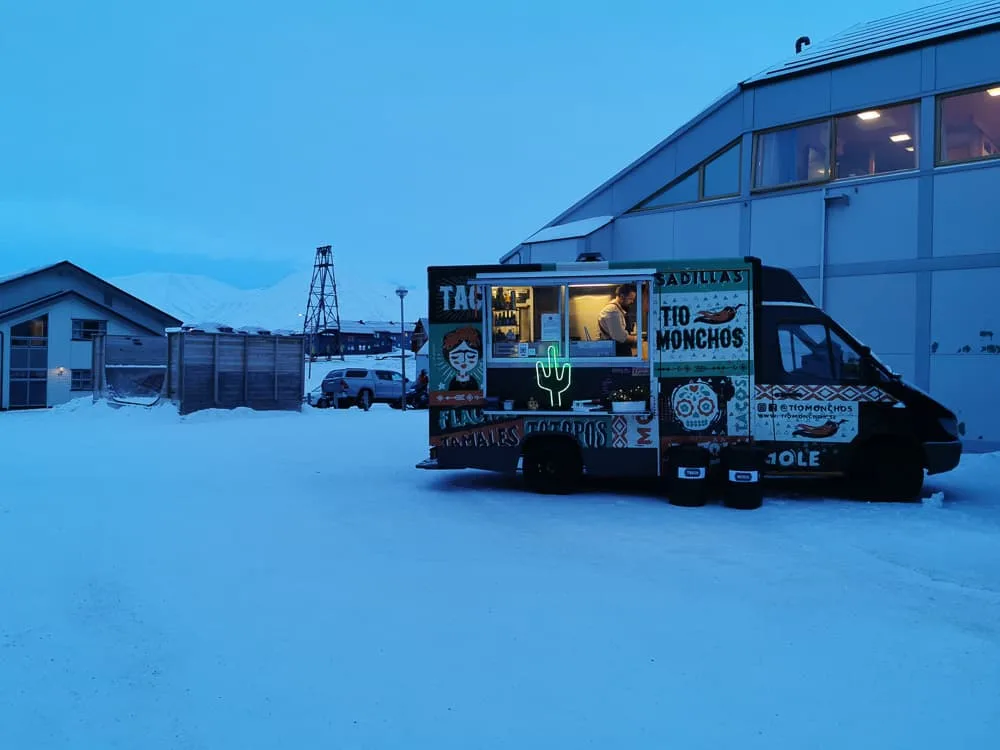
Barentsburg the Russian town
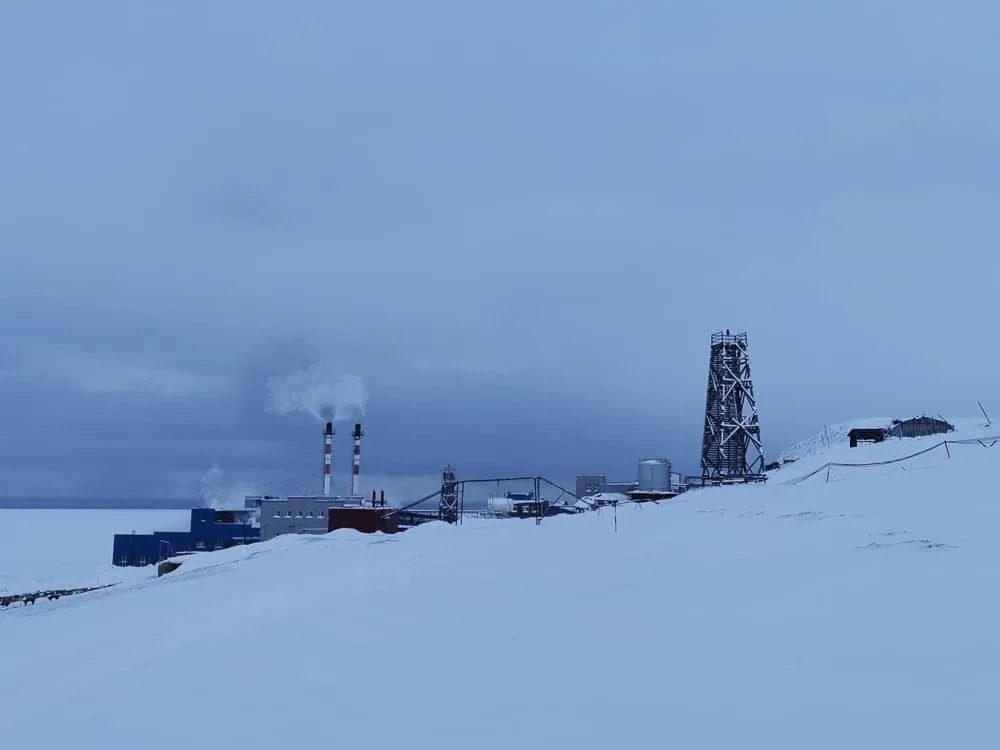
While there might not be any international flights to Barentsburg, it is still the second-largest settlement on the island.
There are about 470 inhabitants in Barentsburg, almost entirely made up of ethnic Russians and Ukrainians – who are primarily working in the coal mine.
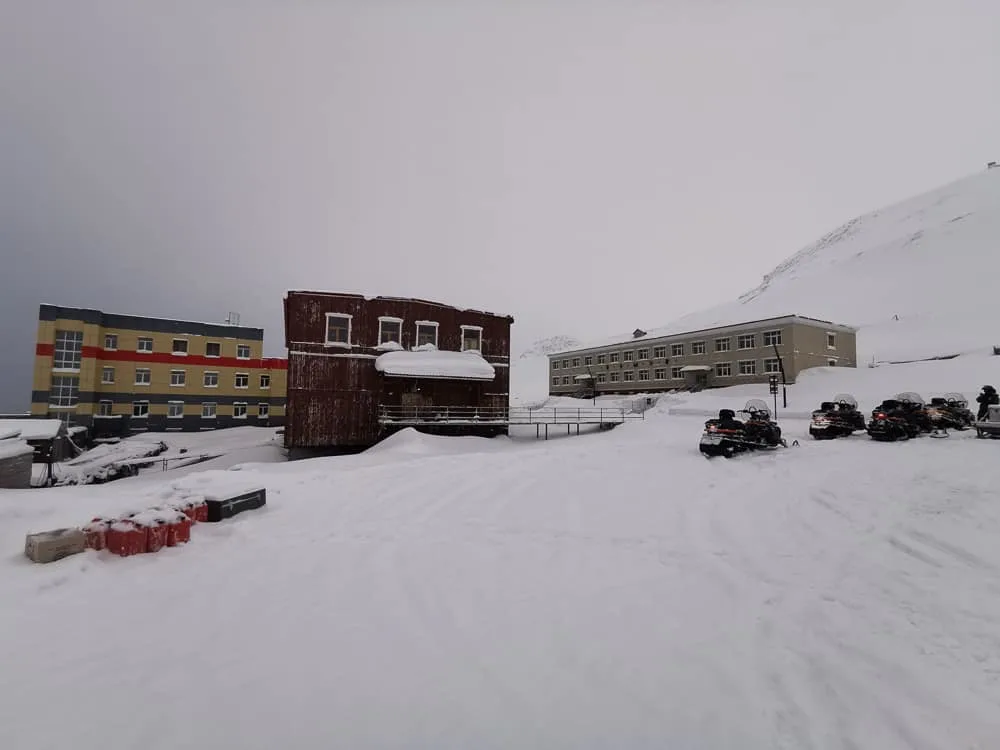
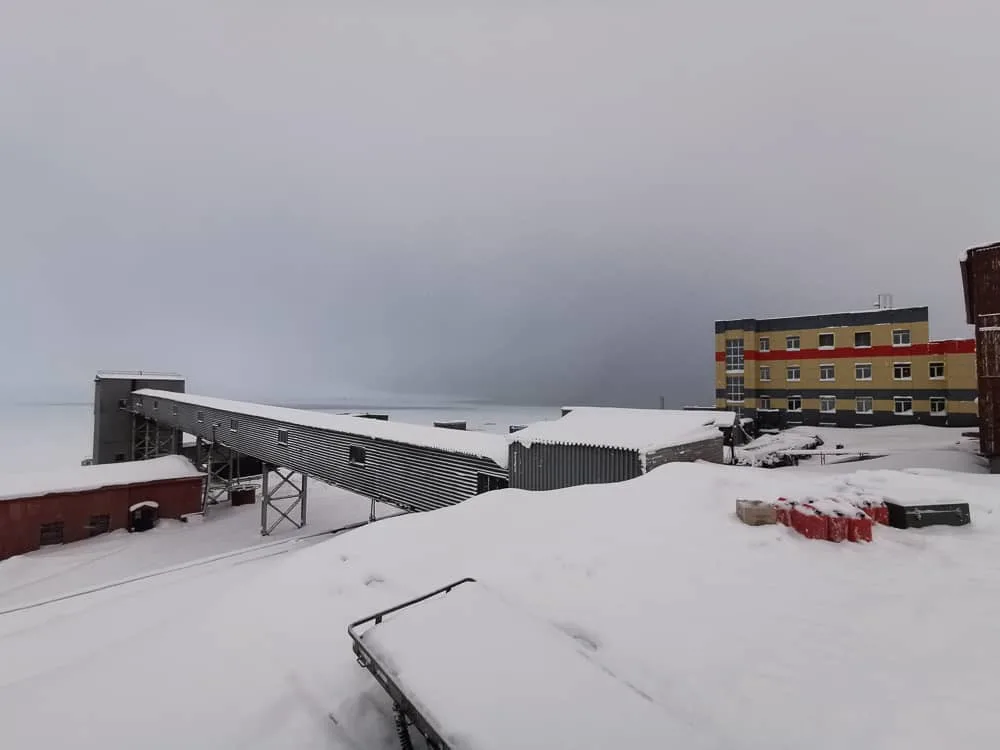
This local supermarket in Barentsburg is the only place in Norway where you can buy vodka and wine in the supermarket.
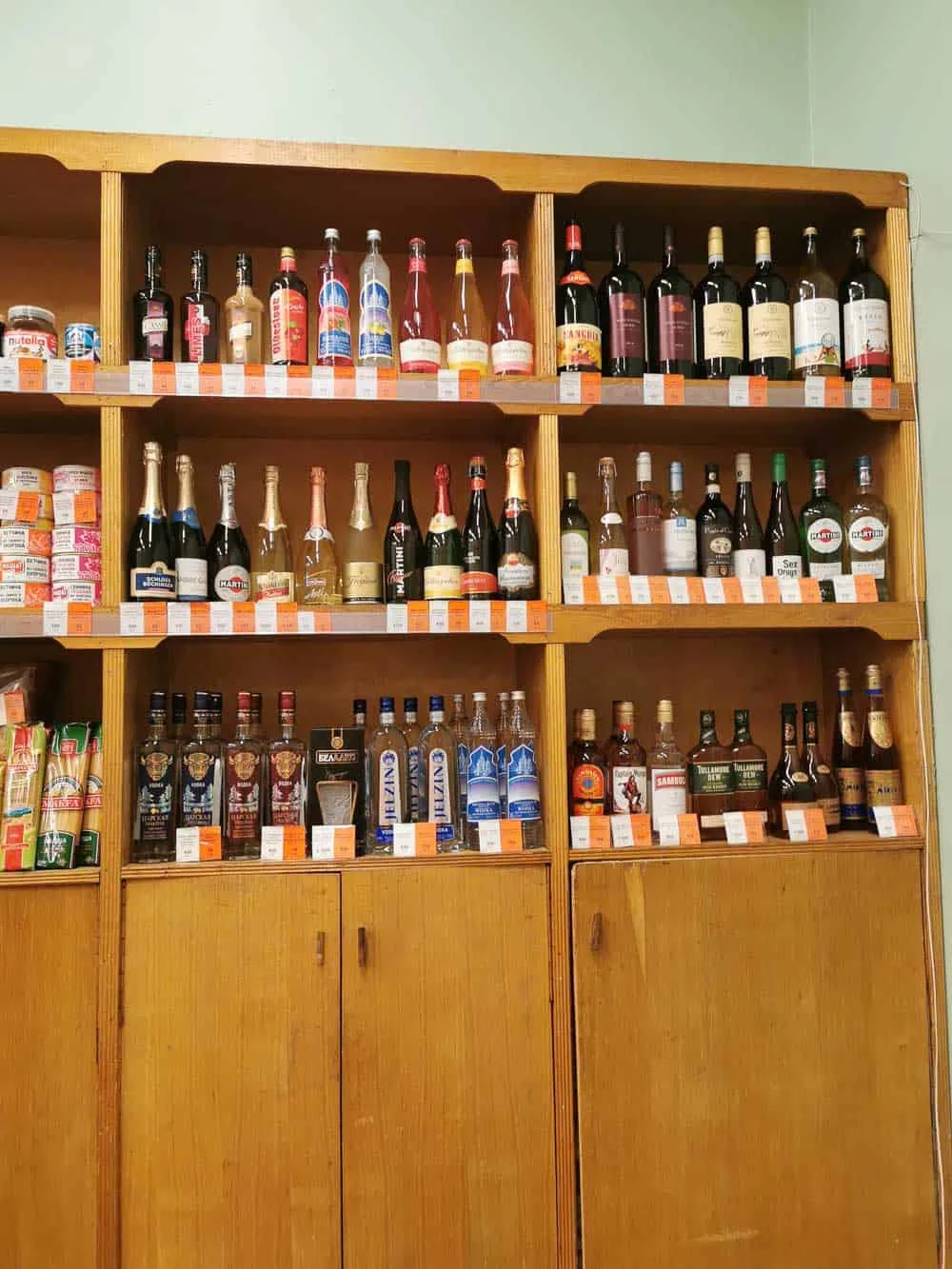
It’s basically a Russian town in Norway. There’s even a Lenin statue in the main square, and you can use Russian Rubles here instead of Norwegian Kr.
This tiny place even has its own Microbrewery. Unfortunately, the beer here is only sold as Draft, so there are no bottles or cans. You will have to visit Barentsburg itself to try one of the beers from here.
NB: The hotel in Pyramiden also has some of the beers from Red Bear for sale on tap.
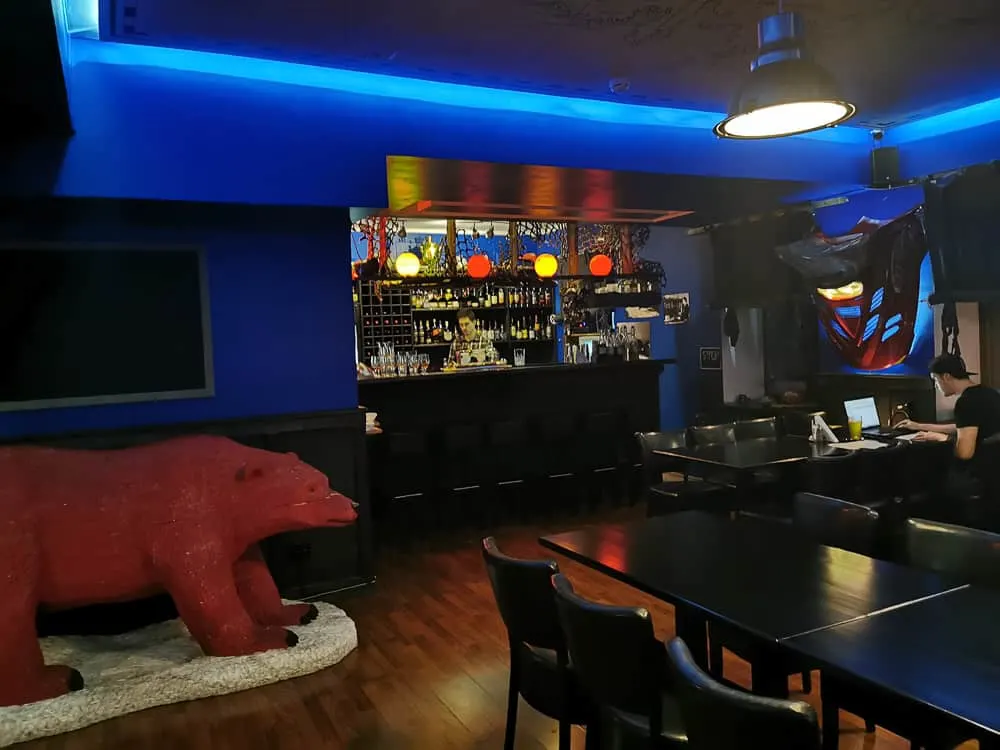
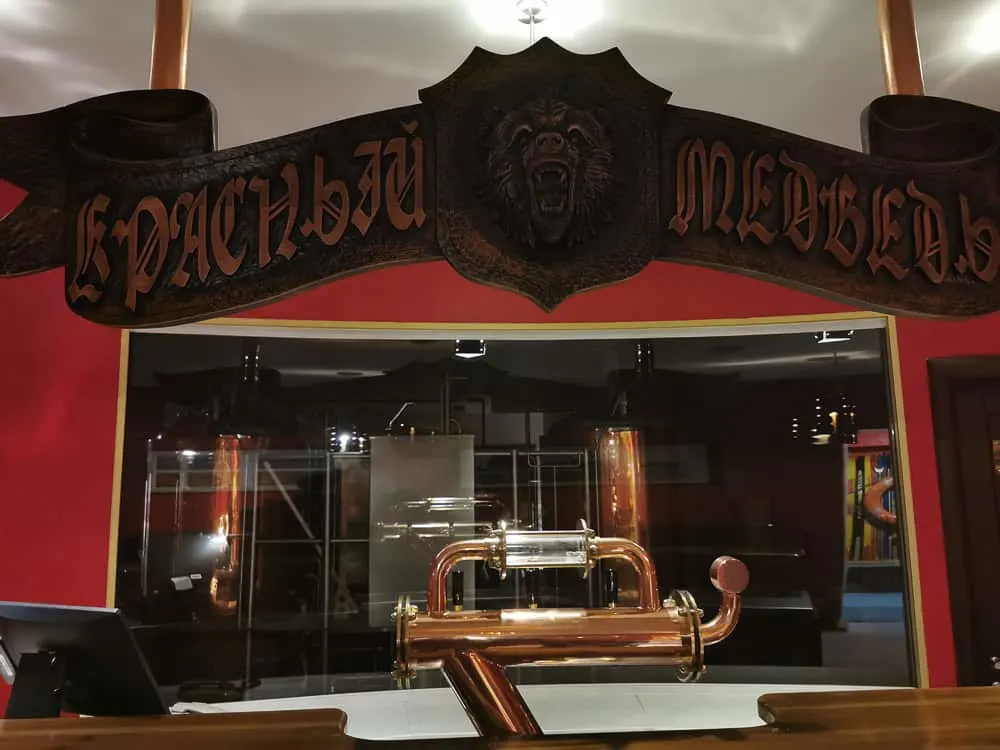

Ny Ålesund
Ny Ålesund is a research settlement, with only about 30 people living here during the cold winter months and about 130 during the summer months.
It is home to what was once the world’s most northern railway and the world’s most northern post office.
It’s considered a popular stop on cruise trips during the summer months, but it’s almost impossible to visit during winter.
Pyramiden
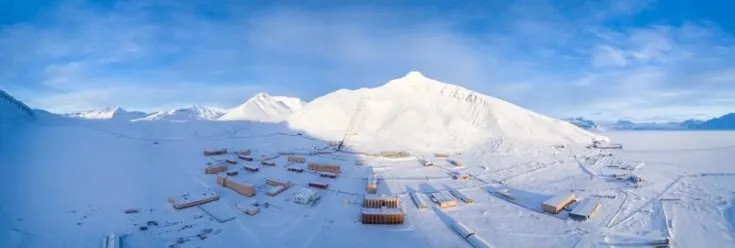
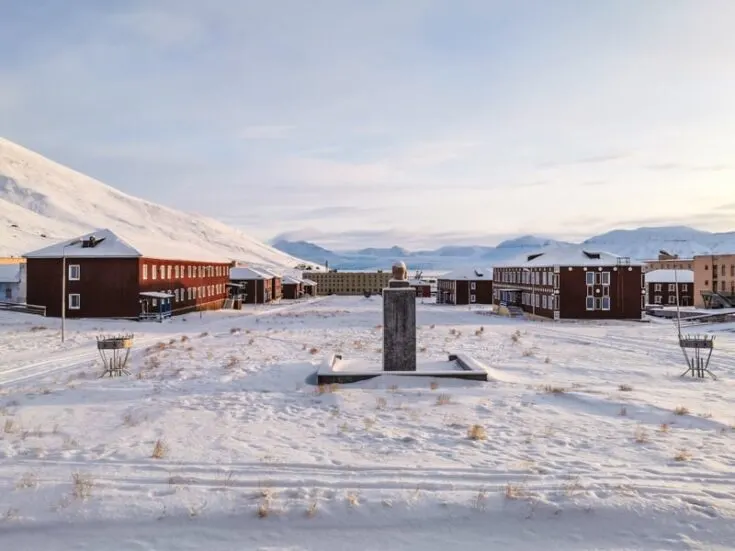
Pyramiden is an abandoned Soviet mining town that the world forgot.
During its peak in 1980, the population here was more than 1,000 – mostly Russian Arctic miners with their families who enjoyed their life here in the Arctic.
These days, only eight people live and work here full time, all working with tourism.
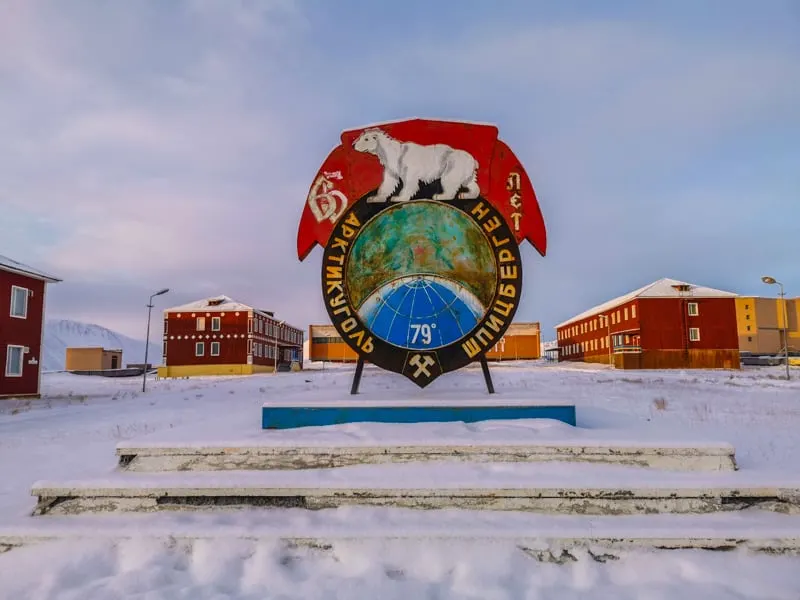
It is getting more and more popular with tourists making snowmobile trips here.
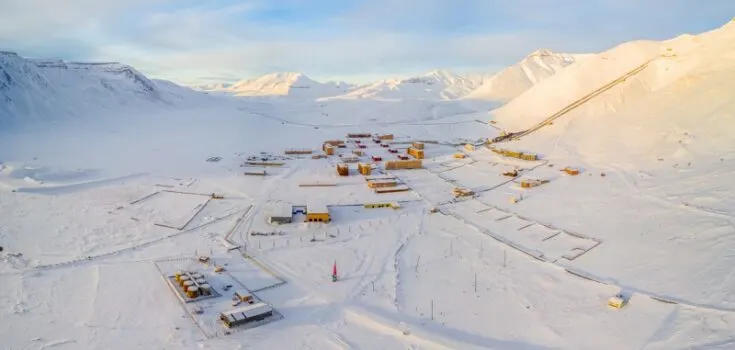
Isfjord Radio Station
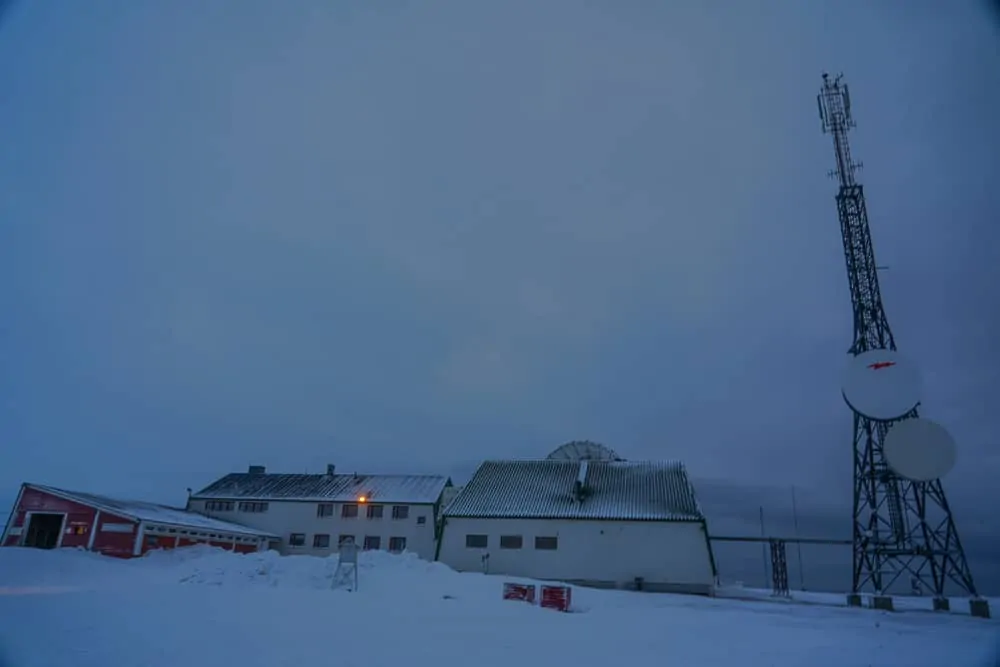
Isfjord radio station was once an important radio station in the north that has now been turned into a beautiful boutique hotel.
This is perfect for people wanting to stay in one of the most remote parts of the world.
An important part of Arctic history and a hotspot for Polar bears.
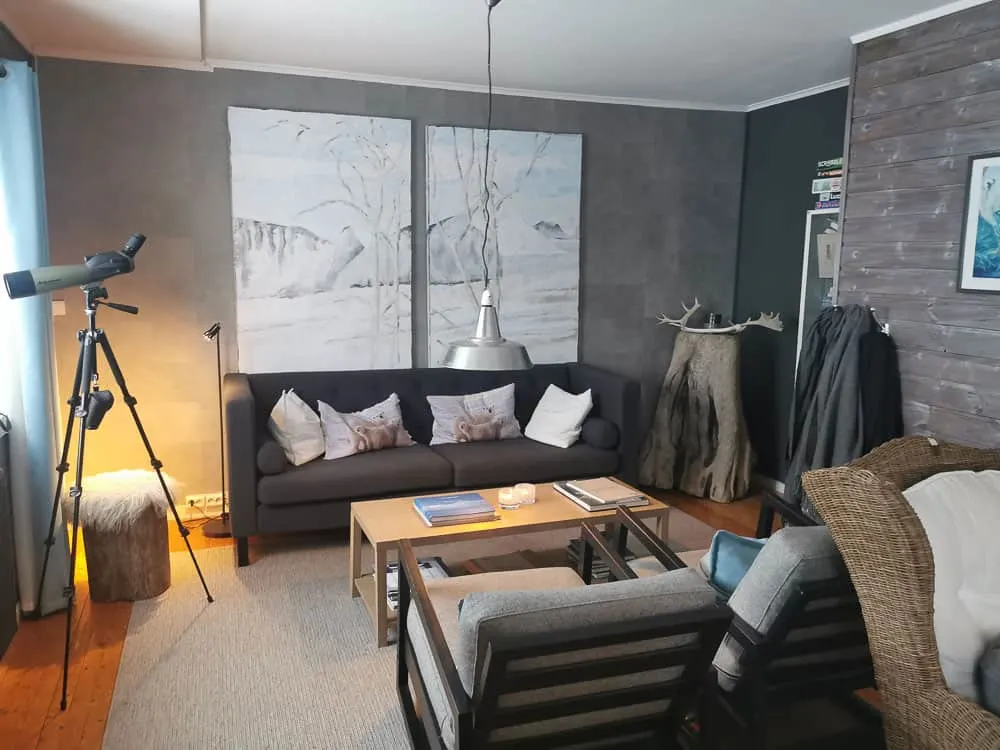
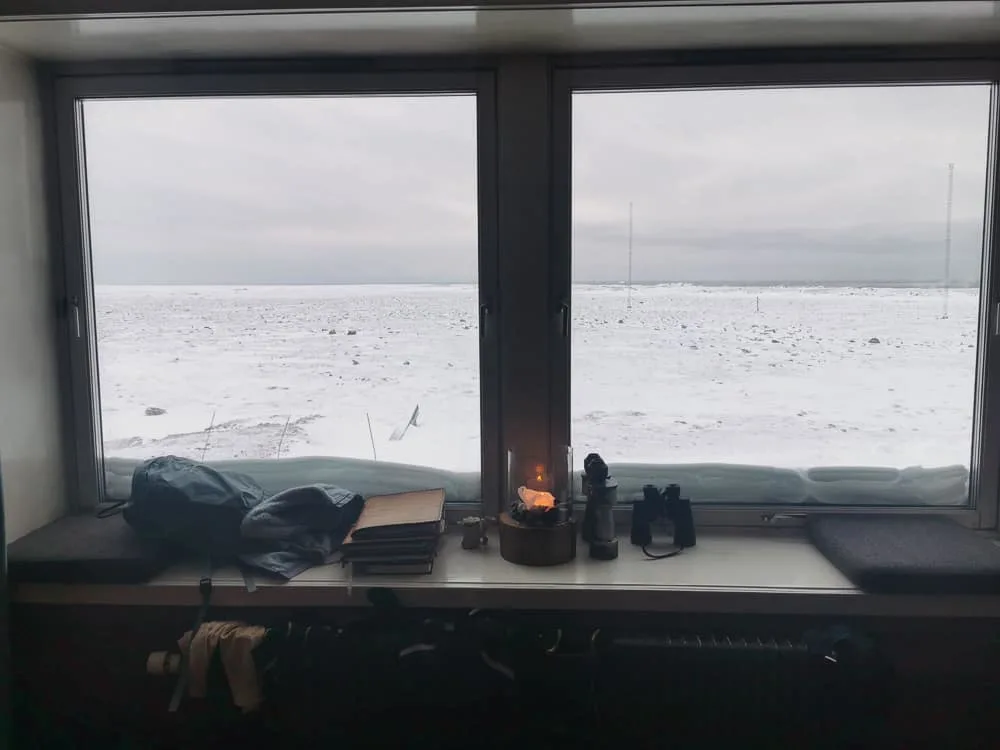
Hornsund
Hornsund is a very remote Polish research center, which is usually not possible to visit for tourists.
Sveagruva
Once the largest coal mine in Norway, the mine and whole settlement were abandoned and demolished in early 2020.
All buildings are now demolished and removed. The Norwegian government spent more than $200 million to remove all traces of humans.
It’s now like this place never existed. There’s nothing left there now.
Places to Stay During Your Trip to Svalbard
There are not a ton of accommodation options in Svalbard.
If you have booked a tour, your accommodation will be included. This can be anything from a hotel to remote camping.
Yes, even in winter, you can go camping or stay in one of the many remote trapper cabins around the island.
But you will most likely have to book a night’s accommodation for your first and last night here.
Longyearbyen has a fair share of accommodation, but most get booked out during the high season. Be aware that, like the rest of Norway, hotels are not cheap here.
- Radisson Blu Polar Hotel is the best hotel on Svalbard but also the most expensive. It is the northernmost full-service hotel in the world.
- Mary-Ann’s Polarrigg is a beautiful guesthouse with tons of history on the walls. One of the cheapest options in Longyearbyen. And very i stayed, ill highly recommed this place.
- Basecamp Hotel, built as a traditional trapper’s hut.
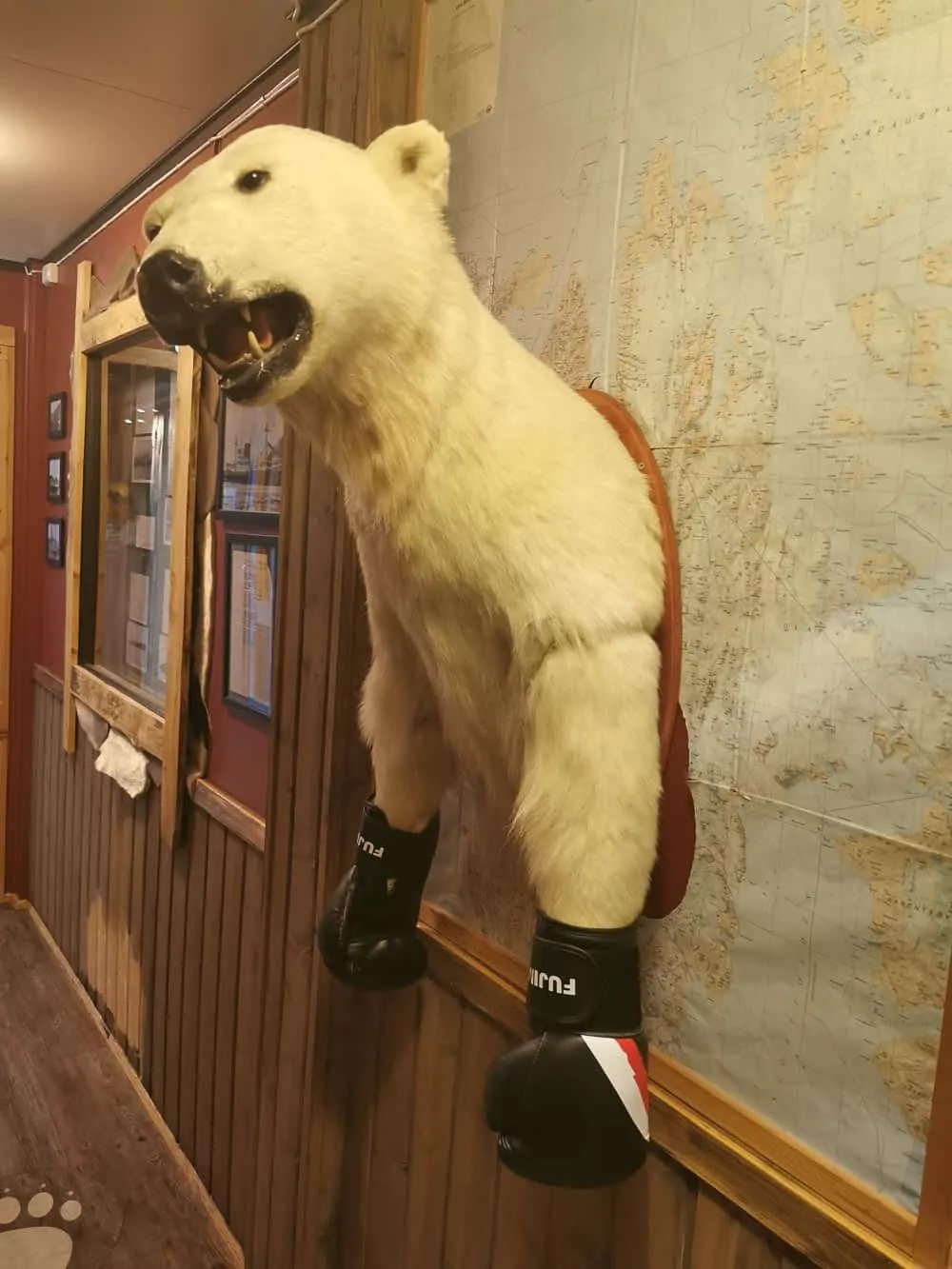
Top Things to Do in Svalbard Winters
While most tourists visit Svalbard on either a cruise or during the “warmer” summer months, the colder winter months are also an awesome time to visit.
There are enough activities to make your trip a memorable one, and here are some of the top things you can do during winter.
Snowmobile Trip
The best and often the only way to get around Svalbard during winter is via a snowmobile. You can either book a regular snowmobile trip or turn it up a bit with a snowmobile trip to the Northern Lights.
Dog Sledding Trip
Traveling around on the back of a sled while being pulled around by Arctic Huskys is one of the most peaceful ways to experience Svalbard during winter.
Ice Cave Visits
There are tons of ice caves and passages under the glaciers – more than 2,000. There are even organized trips arranging camping inside the ice caves.
These are a great option for the more adventurously inclined traveler. And one of the easiest day trips from Longyearbyen.
Skiing Trips
If you don’t want to drive a snowmobile or a dog sled, why don’t you go on a ski trip with a professional guide? This is a great way to experience the true wilderness here.
Snowcat Trip:
Climbing on the back of a snowcat is the best way to experience the wilderness if you want to bring your whole family along in the most comfortable way possible.
There are even snowcat tours to the northern lights.
Explore a Historic Coal Mine
The northernmost coal mine in the world is worth checking out if you are visiting Svalbard. Check-in with one of the local tour guides to get the most out of your trip.
Along the way, you’ll even see the world’s largest seed bank.
See Polar Bears in Svalbard
The best time to see polar bears in Svalbard is from late April to September. This is when the ice has melted, and the Polar bears move inland.
From October to April (winter months), polar bears are much further out on the frozen ice looking for food.
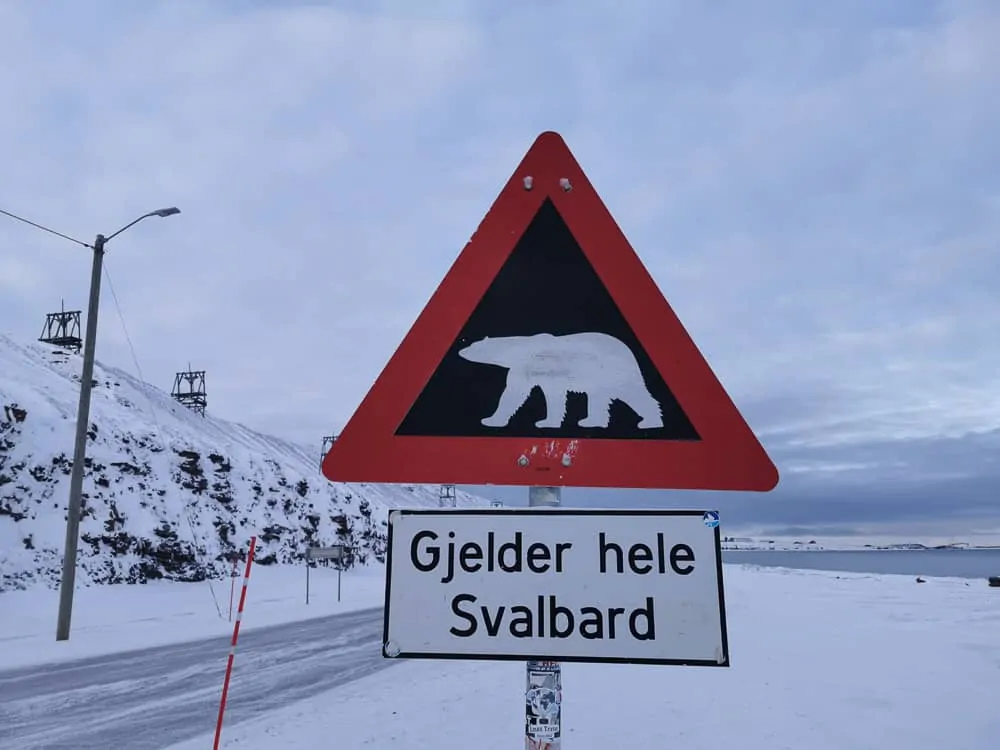
See The Northern Light/Aurora Borealis in Svalbard
Svalbard is one of the best places in the world to see The Northern Lights/Aurora Borealis. But be aware, it’s not a daily phenomenon.
During my seven-day visit, there was no light in the sky. So I guess I have to revisit one day.
The Northern Lights/Aurora Borealis can be seen between September and February, with September and October the best time to see it.
Svalbard Travel Guide
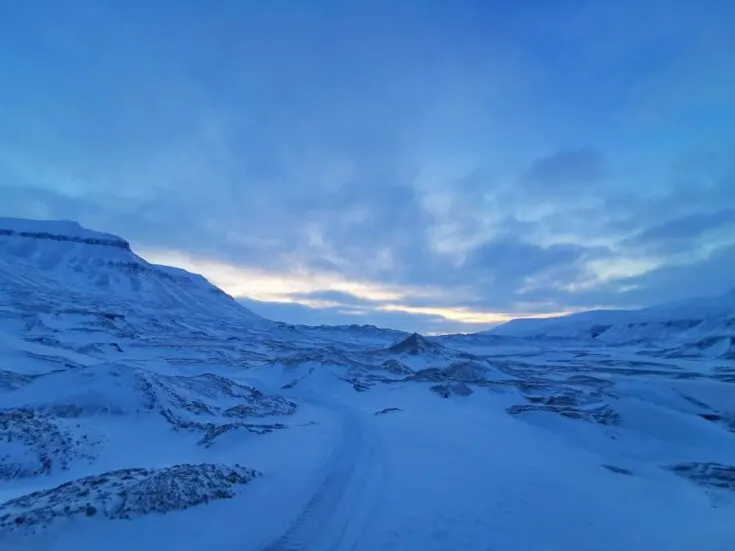
Svalbard is where the mighty polar bears live and roam freely – they actually outnumber the human population – and where reindeers walk freely around town.
This unique holiday destination comes with a list of important things to take note of before starting your holiday. After all, you want to be able to enjoy your holiday without stressing over small details.
How to Travel in Svalbard
Snowmobiles and dog sleds pulled by Arctic huskies are the only way of transportation during the cold winter months, from October to late April.
You’ll also be left in complete darkness (known as polar nights) from late October until February.
There’s also not much you can do outside Longyearbyen without booking a tour. Even if you want to go between the few settlements on the island, you will be required to book a tour.
Note: A trip so far north is not going to be cheap.
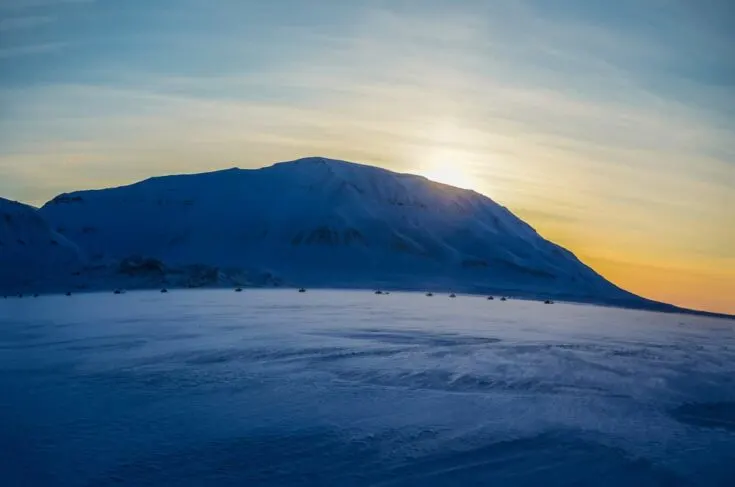
What to Pack for Svalbard During Winter
Packing the correct clothes for your trip to Svalbard during the cold winter months is essential.
During my trip, the day temperature went down to -38ºC (-36ºF), with the wind making it feel like -50ºC (-56ºF) when out driving the snowmobile.
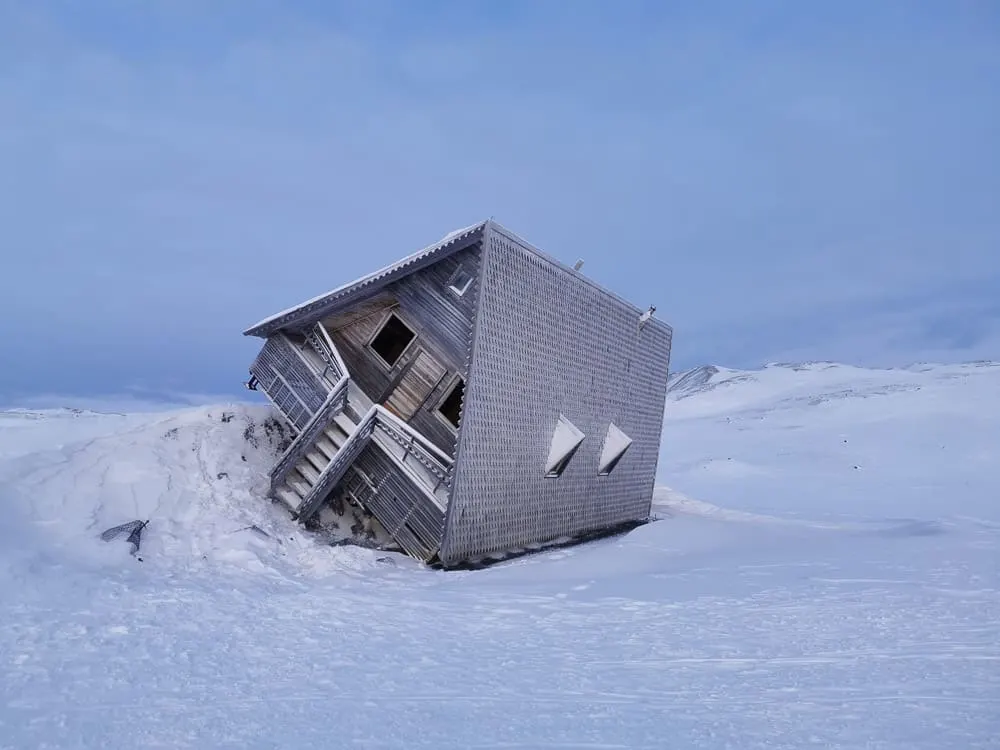
Some proper clothes will make a difference between life and death here – this is not the place to wear jeans and sneakers.
When doing a snowmobile tour, the company will provide you with a full-body suit called the “Svalbard Dressen,” heat-retaining boots, gloves, and a windproof face mask/balaclava.
But you will still need to bring your warmest clothes to wear under the dress.
- Base layer: Woolen underwear for the first layer against your skin; merino wool is perfect for this.
- Wool mid-layer or fleece: A thicker layer to keep you warm.
- Woolen Socks: Preferably two pairs, one thin pair directly on your skin and a ticker one to keep your feet warm.
- Down Jacket: To keep you warm. Make sure to wear one of the warmest winter jackets you can find.

- Windproof jacket and pants: To wear outside your down jacket to protect against the freezing wind.
- Face protection: A full cover face mask or buff.
- A Warm hat and Gloves: A good quality warm hat and preferably two pairs of gloves (one thin pair and a thicker windproof pair).
- Warm Winter Boots: Your trainers or sneakers are not warm enough for Svalbard, even if you wear two pairs of woolen socks.
- Sunglasses and sunscreen & cold cream: The sun is extremely strong here because Svalbard is on top of the world. Don’t underestimate it. It’s important to use sunscreen and cold cream to protect from both the sun and the cold. Even though I used cold cream, I still got minor frostbite on my chin.
- Camera Gear and somewhere to keep it warm: To take photos of the natural beauty and amazing wildlife, but be aware that your camera gear does not like the cold. The camera batteries will drain extremely fast due to the cold, so you will need somewhere to keep them warm. My camera did turn itself off and go into safety mode many times due to the cold.
- Bags: It would be best to pack your things into a wind/waterproof duffel bag, which can fit on the back on your snowmobile. A normal suitcase is not a good choice for a Svalbard trip.

Gun Rules in Svalbard
On Svalbard, you’re required to carry a gun when you walk outside settlements. You are actually breaking the law if you are NOT carrying a gun when leaving these areas.
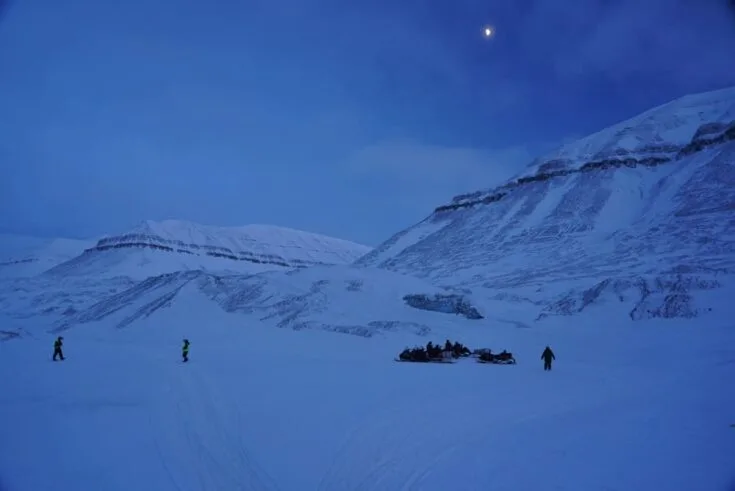
Svalbard Alcohol laws
While Norway has some of the strictest alcohol laws in the world, Svalbard is even stricter.
But, it is tax-free, so at least it’s cheaper than the mainland.
Locals and visitors are actually regulated by quotas for how much alcohol they are allowed to buy each month in the store. There’s no quota for alcohol purchased in bars and restaurants.
You will have to save your flight ticket for Svalbard because your quota will be stamped on your ticket. No ticket = no alcohol shopping at Vinmonopolet.
But you can still buy alcohol in the local bars and restaurants.
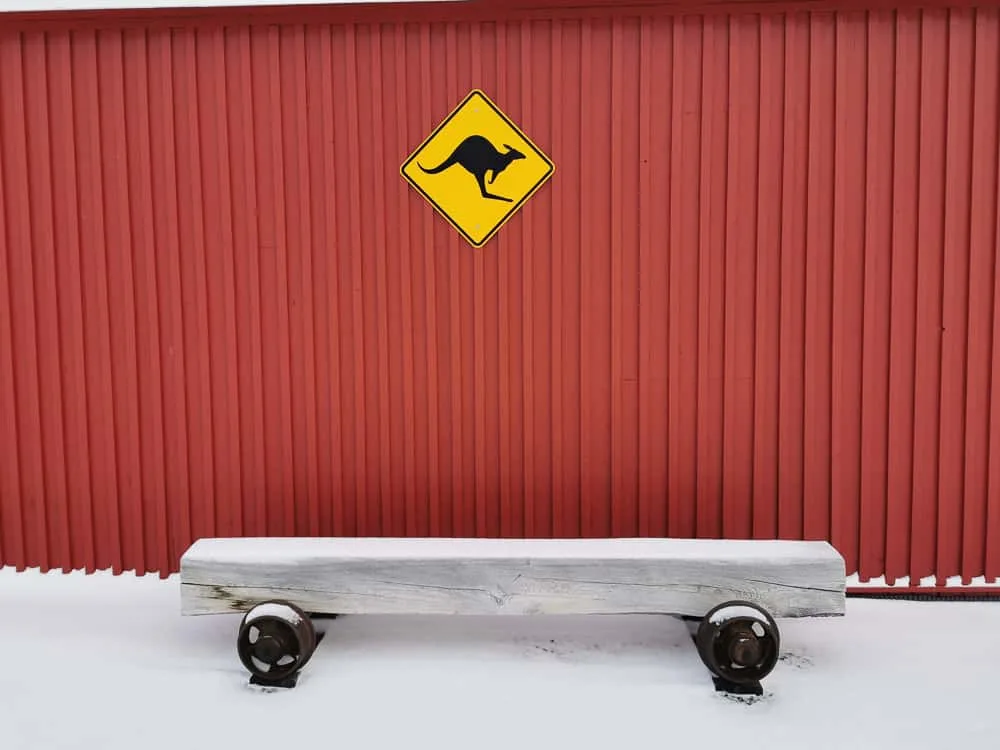
You cannot buy beer in the supermarkets in Longyearbyen; you will have to visit the “Systembolaget” Government liquor store for your purchases.
The quota is:
- Two bottles of liquor a month OR four bottles of wine.
- 24 cans of 0,33l Beer a month.
The Governor of Svalbard may grant persons living in Svalbard or staying there for more than 30 days permission to make purchases according to the same quota rules.
However, this does not apply to passengers and crews on passenger vessels, fishing vessels, research vessels, and naval vessels. They need to export alcohol from the mainland.
Luckily, Longyearbyen has the “Karlsberger Pub,” which was named the 6th coolest bar in the world a few years back. Not bad when you think about where in the world you are.

Karlsberger Pub might have the world’s largest collection of whisky, brandy, and other spirits, with more than 1,000 different options available.
There is even some extremely rare Baron Gaston Legrand Armagnac from 1908.

Craft beer on Svalbard
There is a tiny Microbrewery in Barentsburg which sells its beer in both Barentsburg and Pyramiden.
Longyearbyen also has its own Microbrewery, the “Svalbard Bryggeri,” which is now the world’s northernmost brewery. They use water from Bogerbreen, a glacier that is 2,000 years old, giving the beer a unique taste. The brewery offers tours with beer tasting (you have to book in advance).
10 Fun Facts about Svalbard
- The sun never set between 19th April to 23rd August, called the Polar Summer nights.
- There’s no sunrise for almost three months, from the beginning of November to the end of January.
- Svalbard only has around 40 km (25 miles) of offical roads.
- Longyearbyen is one of the most diverse places in the world, with only 2,400 residents from over fifty different countries.
- There’s no native population from Svalbard and women are not even allowed to give birth on Svalbard. Due to the remote location, a few weeks before their due date, women are obliged to go to mainland Norway to give birth to their babies.
- You are not allowed to die on Svalbard because there are no burials here.
- There are more than 2,000 Glaciers on Svalbard.
- There are no trees here. Only a few bushes.
- The world’s most northern university is located in Longyearbyen.
- There are more polar bears and walruses on Svalbard than people.
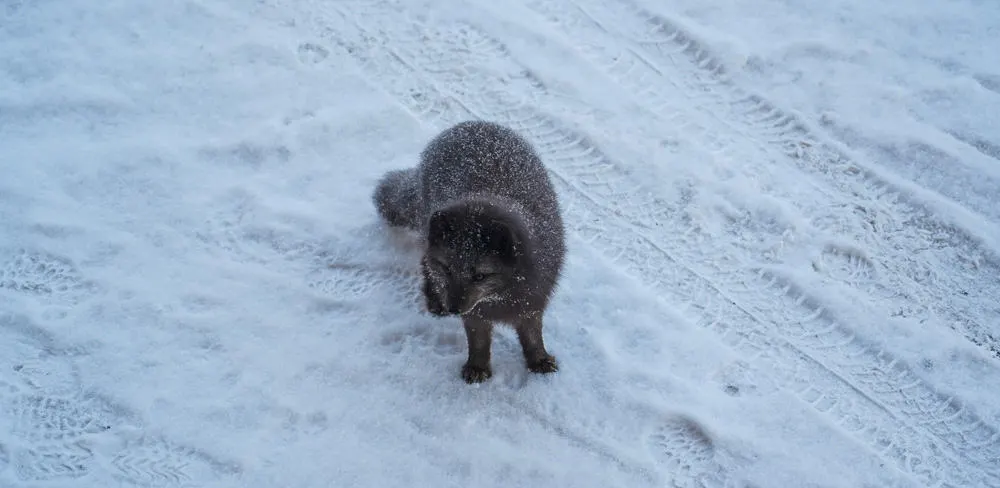
How to Travel to Svalbard in the Winter
While many people visit Svalbard during the warmer months, you should not avoid winter. This unique destination will give you an experience, unlike any other place you’ve been.
And now that you know how to get here and what to do in Svalbard in Winter, you should have no more excuses. It’s time to plan your trip and visit the northernmost island on Earth.
